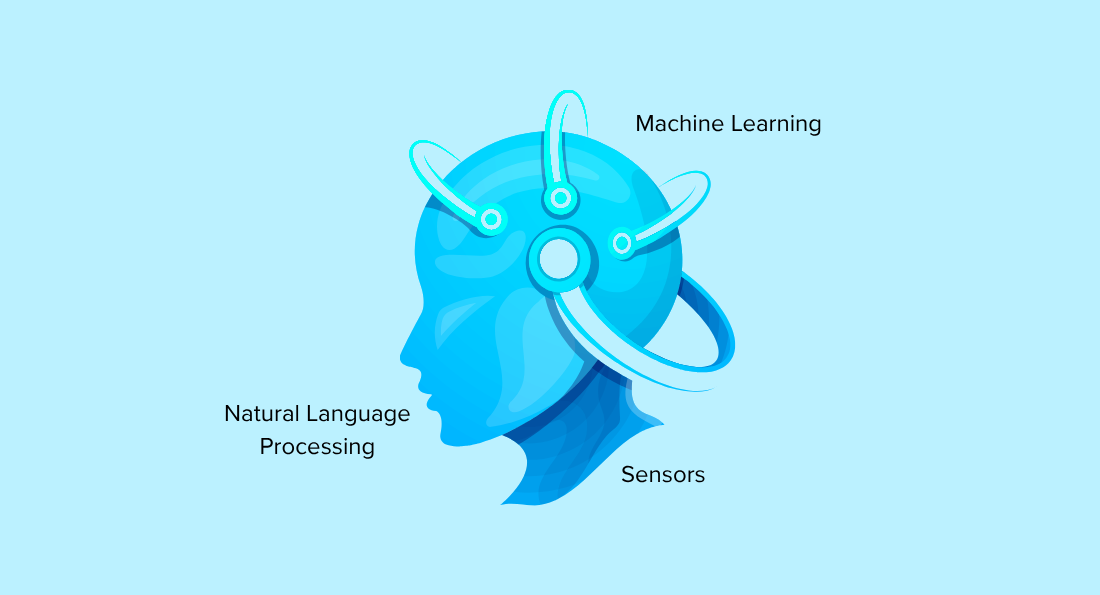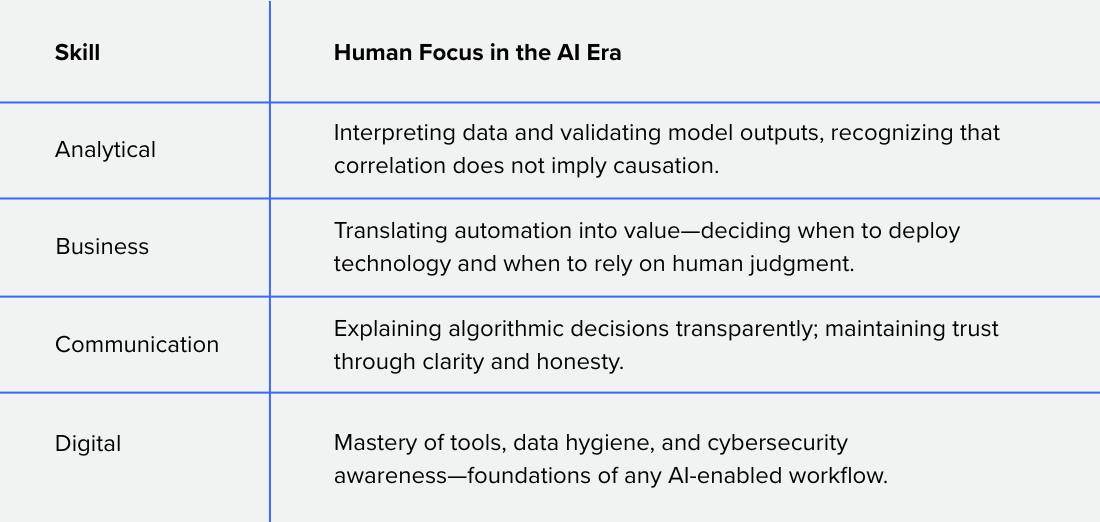Blogs
AI and the Human Mirror
AI has become a mirror of humanity—amplifying our creativity, biases, and choices. This piece reflects on how intelligent systems reshape our world and how we can remain worthy of augmentation by using them with wisdom, ethics, and empathy.

Introduction
Artificial Intelligence (AI) is not a twenty‑first‑century creation. It is a continuum of inquiry that began nearly a century ago. The idea of simulating human reasoning dates back to the 1930s, when Alan Turing and his contemporaries explored whether machines could “think.” The discipline gained formal identity after World War II, as early computers demonstrated that logic could be encoded and executed. Research accelerated through the 1950s and 1960s, driven by curiosity about automation and supported by military funding, but slowed through the 1970s and 1980s when hardware and data were insufficient to realize the vision. The 1990s brought a quiet revival as computation costs fell and data volumes grew, setting the stage for the present era.
The past decade has been transformative. What was once confined to research labs now permeates daily life - in the form of recommendation systems, fraud detection, voice assistants, and generative models. Following the public release of ChatGPT in 2022, AI moved from academic and professional circles into mainstream conversation. Today, nearly 80 percent of enterprises report some level of AI adoption (McKinsey, 2025), and the global AI market is projected to exceed USD 400 billion by 2027 (Statista). The narrative has shifted from “AI vs humans” to “humans with AI.”
What AI Really Mimics
When we discuss Artificial Intelligence, we refer to an effort to replicate the human brain. Humanity’s distinction does not come from physical strength or speed but from the ability to sense, reason, and create. In the digital realm, this triad assumes technological equivalents that collectively form the foundation of what we refer to as intelligent systems.
Machine Learning corresponds to the brain—the mechanism that detects patterns, learns from examples, and continuously refines its understanding through experience. Deep Learning extends this further, imitating the subconscious layers of cognition that extract complex features from raw data, much as the human mind unconsciously learns to recognize faces, interpret emotions, or discover relationships through repeated exposure.
Sensors act as extended senses of this synthetic organism. Cameras, microphones, and embedded chips now perceive the world with a precision beyond human capability. They detect infrared light, capture ultrasonic vibration, and record sub‑millisecond changes in temperature—signals no biological sense could perceive unaided.
Natural Language Processing, meanwhile, gives the system its voice and its ears. It allows machines to interpret human language, respond coherently, and sustain meaningful dialogue. With large‑language models, this exchange has become so fluid that the boundary between instruction and conversation is fading.
Together, these capacities—learning, sensing, and communicating—form what may be called the augmented human. It is not a replacement for humanity but an expansion of it, extending perception, reasoning, and memory beyond natural limits. For this reason, many scholars now prefer the term Augmented Intelligence, recognizing that progress lies not in imitation but in amplification of human potential.

AI as a Mirror
Every powerful technology becomes a mirror reflecting the human condition. The printing press revealed the hunger for knowledge; electricity reflected our pursuit of speed and continuity; AI now reflects our patterns of thought and bias. It magnifies both creativity and error. When the data fed into a model carries bias, the model learns and replicates it. When trained on balanced reasoning, it amplifies fairness. AI does not invent ethics—it compels us to confront them.
From Passive User to Contributor
People engage with Artificial Intelligence at different depths. Some remain passive users, encountering AI invisibly in their daily lives—through search engines that anticipate queries, navigation systems that adjust to traffic, or social media feeds that shape their experience. Others become active users, deliberately employing AI tools to enhance their work, such as writing, analysis, design, or communication. At the highest level are contributors—the engineers, scientists, and domain experts who design, fine‑tune, and govern these intelligent systems.
Actual progress lies in moving upward along this path of engagement. Citizens must understand the implications of the data they generate. Workers must learn to collaborate with AI responsibly, blending computational precision with human intuition and judgment. And businesses must transcend the role of mere consumers, becoming responsible creators of systems that embody fairness, accountability, and purpose.
Skills in the Age of Intelligence
My ABCD framework—Analytics, Business, Communication, and Digital—captures the essence of the skills needed in this new era. Analytical ability now demands interpreting data and validating model outputs, understanding that correlation does not imply causation. Business acumen means recognizing where automation adds value and where human judgment remains essential. Communication requires the skill to explain algorithmic decisions clearly and maintain public trust. Digital competence encompasses mastering tools, maintaining data hygiene, and promoting cybersecurity awareness. The following table gives a snapshot of all four skills that I described:

Technical literacy alone no longer defines readiness. The AI professional must bring emotional intelligence, ethics, and interdisciplinary thinking. Executives estimate that up to 40 percent of their workforce may need to reskill within three years due to the impact of AI and automation (Why we must bridge the skills gap to harness the power of AI). Yet many employers already prefer candidates who are cross-skilled, bridging the gap between technology and humanity.
The SMART Framework for Responsible AI Adoption
To guide individuals and organizations in adopting AI responsibly, I developed the SMART model—a sequence for building sustainable and transparent AI practice. It begins with Simplify and Standardize Data, recognizing that data is the raw material of intelligence. Information must be digitized, clean, and consistent, as fragmented or unstructured records cannot power intelligent systems. The next step is to Map Repetitive Decisions, identifying daily operational activities—such as approvals, verifications, and scheduling—that can be automated without compromising discernment or accountability.
Once such opportunities are mapped, it is essential to Apply Small Pilots—focused experiments that remain measurable, purposeful, and limited in scope. This phase allows organizations to validate outcomes and manage risks before expanding. The next stage is to Review and Recalibrate, emphasizing continuous evaluation, bias audits, and model tuning to ensure fairness and accuracy. Finally, organizations can Transform and Scale Responsibly, extending successful pilots across larger processes with sustained human oversight and ethical governance. Figure 1 illustrates the SMART Framework.

This measured, iterative approach helps prevent AI fatigue, strengthens trust, and allows confidence to grow step by step—ensuring that intelligence serves as an enabler of progress rather than a replacement for human judgment.
Impact on the Job Market
The fear that AI will obliterate employment is often overstated, though not entirely unfounded. Automation will replace specific tasks, but it will rarely replace entire professions. Estimates suggest that generative AI could automate a modest share of current work hours. Yet if economies invest in reskilling, the overall employment effect may be neutral or even positive.
The transformation is primarily qualitative. Routine and clerical functions shrink, while analytical, creative, and supervisory responsibilities expand. Professionals who can collaborate effectively with intelligent systems—who are AI‑literate—will find increasing opportunity. In practice, AI replaces tasks, not jobs. The radiologist may spend less time scanning images and more time advising patients. The lawyer will review fewer documents manually and devote more energy to strategy. The center of work shifts from execution to interpretation.
For job seekers, adaptability now outweighs specialization. Lifelong learning is no longer optional—it is the rhythm of a sustainable career.
Ethics and Governance
As AI becomes more powerful, its responsible use becomes more urgent. Large language models can produce text that is indistinguishable from human writing, blurring the lines between truth and fabrication. Deepfakes can replicate voices and faces with uncanny realism. Recognizing these challenges, nations are creating governance frameworks. The EU AI Act classifies systems by risk and mandates transparency. The U.S. NIST AI Risk Management Framework sets voluntary standards for trustworthy AI. India’s National AI Mission aims to achieve the ideal of “AI for All,” striking a balance between innovation and ethical safeguards.
For enterprises, ethics is no longer aspirational—it is now a regulatory requirement. Each organization must know what data it possesses, how it is used, and who is responsible for the outcomes. Trust, once an intangible quality, has become a measurable asset.
AI and the Enterprise
From a business standpoint, AI has become a general‑purpose technology—its impact is as foundational as electricity or the internet. Enterprises are integrating it across three interconnected layers. The first focuses on Operational Efficiency, where predictive maintenance, logistics optimization, and automated customer service streamline productivity. The second enables Strategic Insight, which utilizes advanced analytics to identify market shifts and inform strategic decisions. The third fosters Creative Transformation, where AI assists in product innovation, personalized experiences, and decision intelligence.

Small and medium-sized enterprises, in particular, benefit from modular, cloud-based AI services that lower the barriers to entry. However, meaningful adoption must follow the SMART principle—start small, validate results, and scale responsibly. Studies show that firms that embed AI into their workflows achieve noticeable productivity gains when employees are retrained in tandem. Where reskilling lags, benefits quickly fade. Technology without people is half a solution.
How Each Stakeholder Should Respond
Every group has a distinct role in this evolving ecosystem. Citizens must recognize themselves as data producers, practicing digital hygiene—verifying sources, questioning algorithmic feeds, and demanding transparency. Awareness of privacy and consent is the new literacy.
Job seekers should regard AI as a collaborator rather than a competitor. Developing fluency in prompting, validation, and interdisciplinary reasoning will be essential. The future favors those who combine technological skill with human insight—professionals capable of translating machine output into social or economic value.
Businesses must cultivate a culture of experimentation balanced with accountability. This means establishing ethics boards, enforcing human oversight, and linking AI performance not just to revenue but to trust and social good. The most successful enterprises will be those that treat data stewardship as an intrinsic part of their brand identity.
A Human Future with Intelligent Machines
Viewed philosophically, AI’s evolution mirrors humanity’s own quest for understanding. Our neural networks have inspired machine learning; now, machine learning is expanding human intellect. The feedback loop has closed. The deeper question is not whether AI will surpass us, but whether we will remain worthy of augmentation.
AI’s success will depend less on algorithms and more on our collective wisdom—our Sadbhāva (goodwill), Sadāchāra (ethical conduct), and Darśana (pursuit of understanding). When these principles meet technical excellence, civilization moves forward. The challenge is not merely survival alongside machines, but refinement through them—to become more human by using intelligence wisely.
Closing Reflection
Artificial Intelligence began as an attempt to reproduce human reasoning; it has evolved into an instrument that tests human purpose. It is the mirror of our species—reflecting ingenuity, bias, compassion, and ambition all at once.
If we engage it with awareness and empathy, AI will amplify creativity, accelerate discovery, and extend welfare. If we surrender thought to it, we risk becoming mechanical ourselves. The future of AI, therefore, is inseparable from the future of self‑understanding. Not AI versus us, nor even us with AI, but we through AI—a partnership in which intelligence, in every form, continues the timeless human quest to know, to create, and to be.